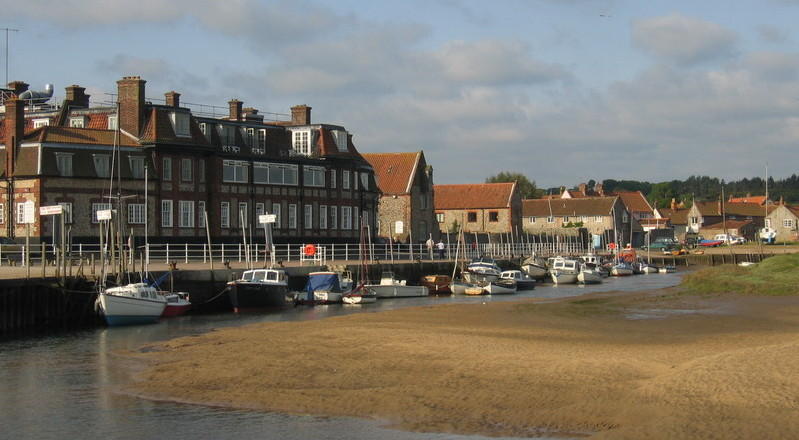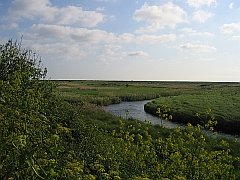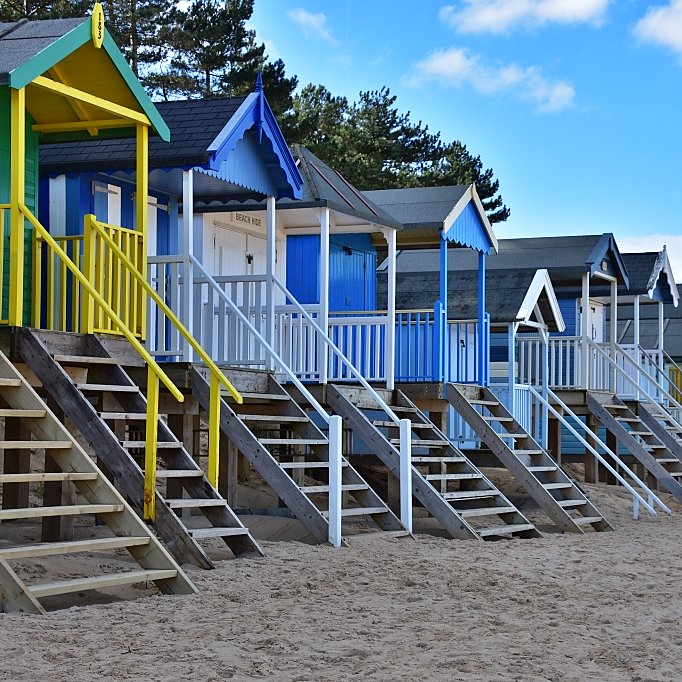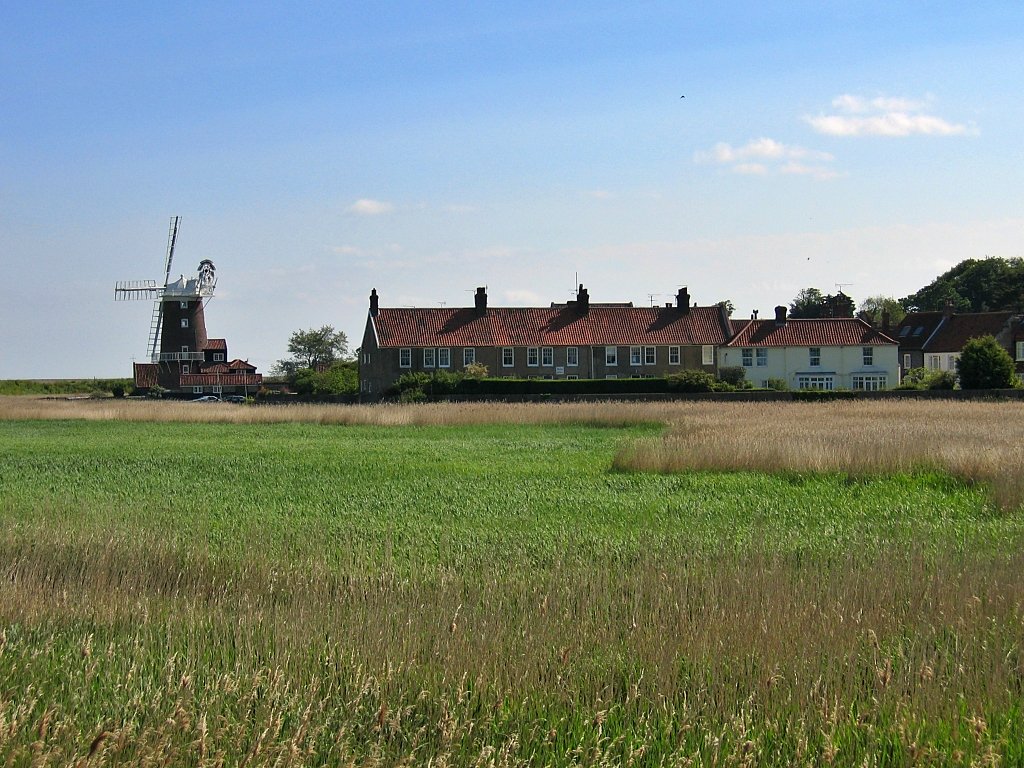Blickling Hall
Blickling Hall is a stunning, early seventeenth century moated stately home at the heart of a picturesque five-thousand-acre estate in Norfolk. The magnificent house is packed with history, has grand formal gardens and lake, a healthy walled kitchen garden, and attractive walking or cycling around the parkland. And, for those of you who don't fear the supernatural... Blickling Hall is also the National Trust’s most haunted property!
A Brief History of Blickling Hall
The history of the estate starts in the eleventh century, when it belonged to one Harold Godwinson, who went on to become King Harold II. In October 1066, William the Conqueror defeated King Harold II at the Battle of Hastings, and England fell under Norman rule. King William I then gave the Blickling estate to the church and Harold’s manor house became the summer palace of the bishops of Norwich.
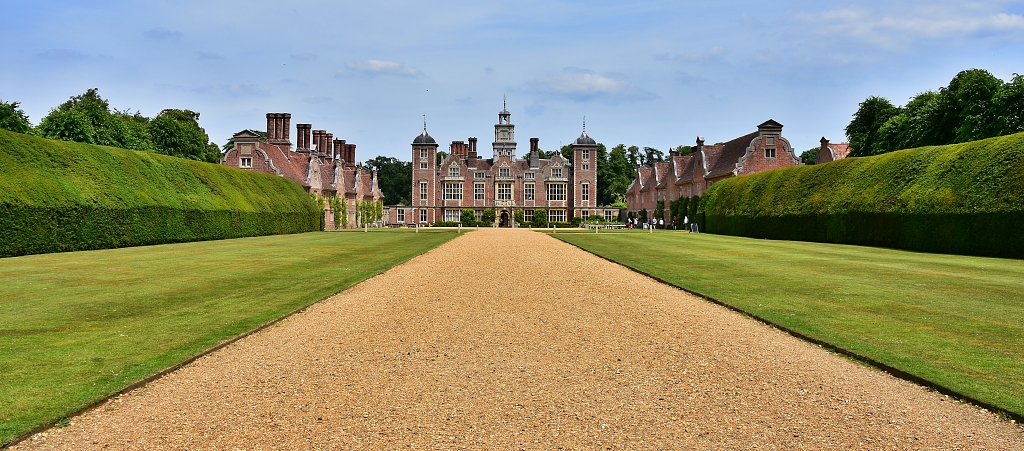 The Impressive Approach to Blickling Hall © essentially-england.com
The Impressive Approach to Blickling Hall © essentially-england.comThe next development for the estate occurred around 1390 when one of King Edward III’s main supporters, Sir Nicholas Dagworth, built a new moated manor house. Subsequently, the estate became the property of Sir John Fastolf, an English knight during the Hundred Years' War and one of the most powerful men in Norfolk. It is said that he was the inspiration for Shakespeare’s comic character of Falstaff who appeared in three of the bard's plays!
However, The Shrieve’s House and Barn in Stratford-upon-Avon may contest this, as they believe Shakespeare based the character of Falstaff on a sixteenth century inn keeper called William Rogers. The jury is out!
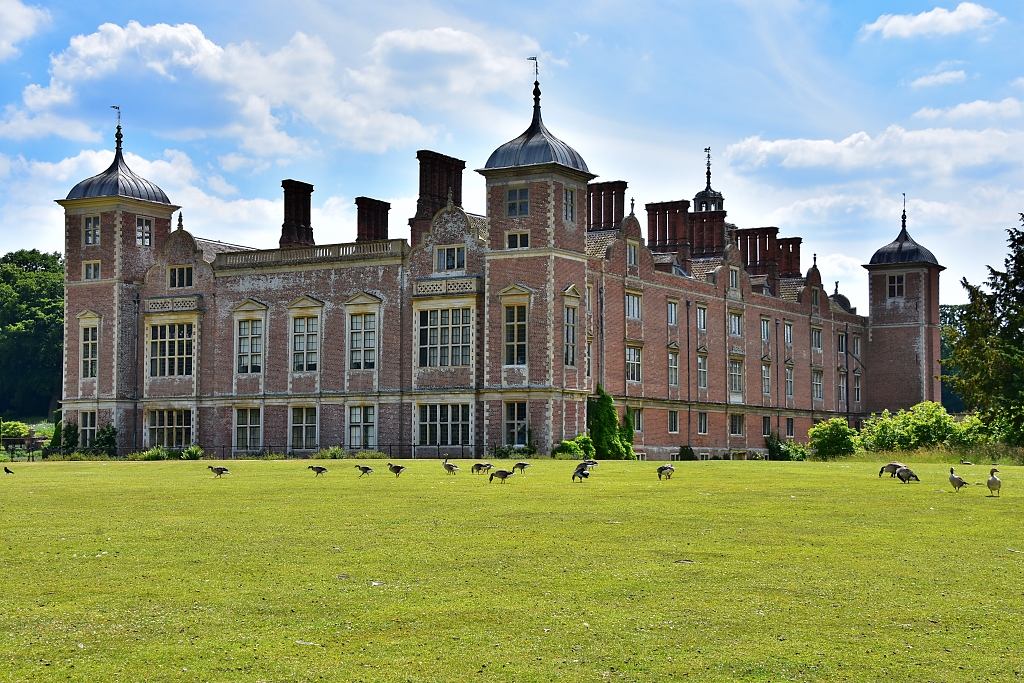 View of Blickling Hall from the Lakeside © essentially-england.com
View of Blickling Hall from the Lakeside © essentially-england.comSir John eventually sold the estate to Geoffrey Boleyn who was the great grandfather of Anne Boleyn, the second wife of King Henry VIII, Queen of England between 1533 and 1536, and mother of Queen Elizabeth I. It is believed that Anne was born at Blickling in 1501, although she spent most of her childhood at Hever Castle in Kent. In 1536, Anne was beheaded for treason in the Tower of London.
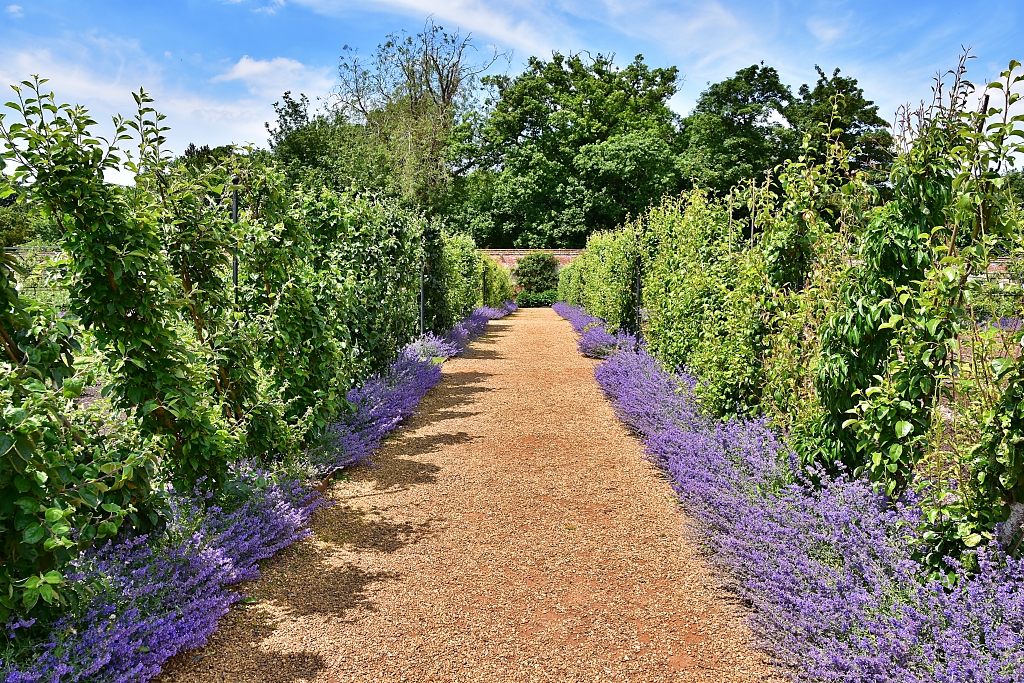 Fruit Trees in the Walled Garden
Fruit Trees in the Walled Garden © essentially-england.com
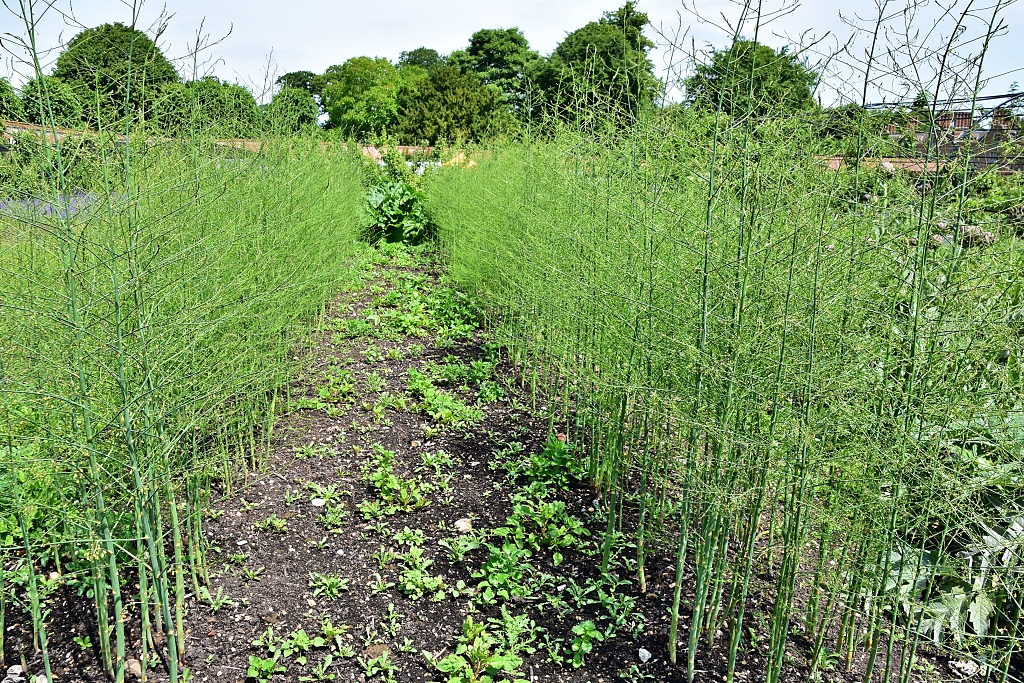 The Asparagus Plot in the Walled Garden
The Asparagus Plot in the Walled Garden © essentially-england.com
In 1616, Sir Henry Hobart, who owned the Blickling estate, paid the grand sum of £5,500 for the house and immediately started to remodel the house into what we see today. He wanted to keep the history of the house, so the brief to his architect was to combine as much of the structure of the old house into the new one. Unfortunately, though, Sir Henry died in 1625 and never saw the completed house!
Blickling Hall is now almost four hundred years old and has seen families come and go. During this period, rooms changed their use, staircases changed positions, and new rooms were created. It feels strange walking around this beautiful old house and probably seeing more of it than the man that started building it!
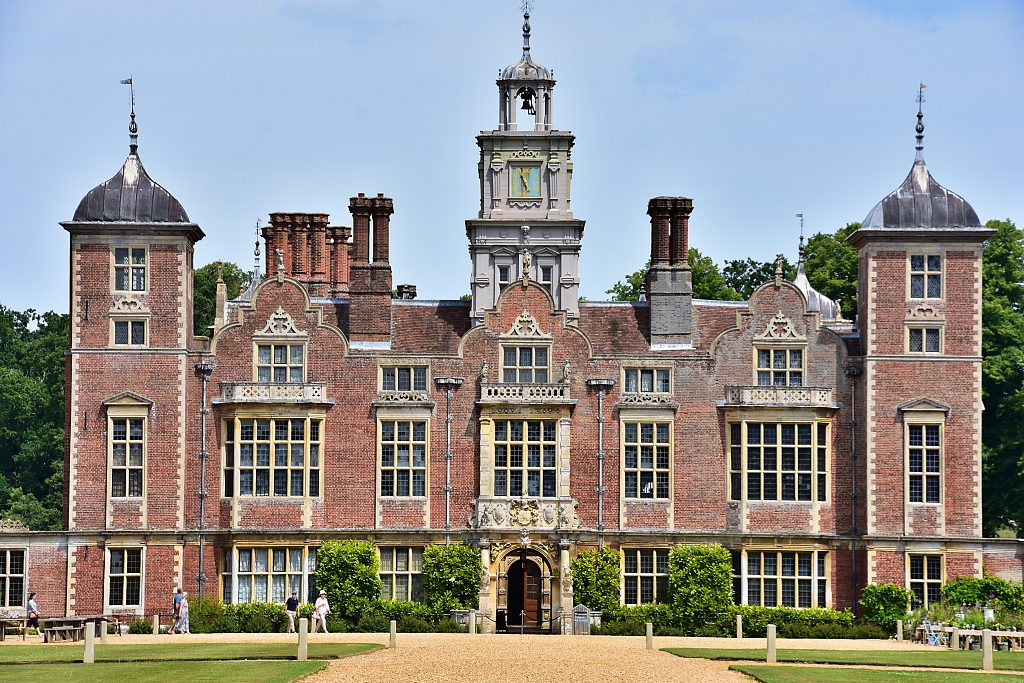 Blickling Hall © essentially-england.com
Blickling Hall © essentially-england.com
Tour of Blickling Hall
Blickling Hall has spectacular kerb appeal and makes a great first impression! If you see Blickling Hall from the road, you’ll be drawn towards the entrance along the gravel paths between manicured lawns and four-hundred-year-old yew hedging.
As you approach the entrance, you’ll notice the Hobart bulls watch you crossing the moat on the stone bridge. You pass through an archway, across a small courtyard and into the Great Hall.
The house is finished in the style of the last owner, Philip Kerr, 11th Marquess of Lothian, who gifted the Blickling Estate to the National Trust in 1940.
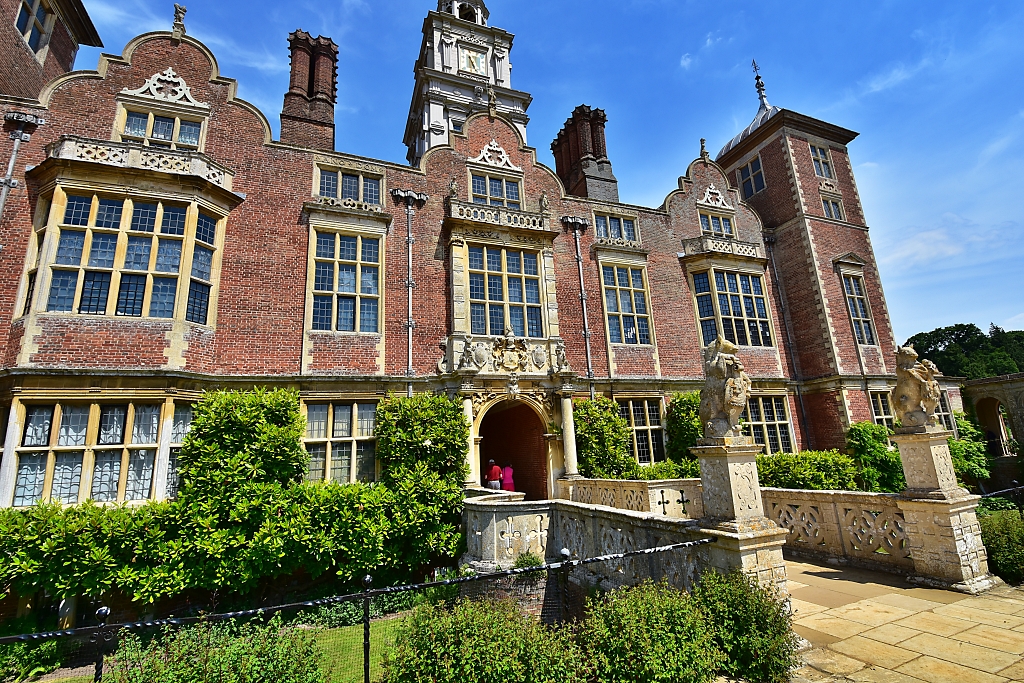 Hobart Bull Statues Outside Blickling Hall Entrance © essentially-england.com
Hobart Bull Statues Outside Blickling Hall Entrance © essentially-england.comGreat Hall
The centre piece of the Great Hall is the elegantly carved double flight staircase. The room was heavily modified in 1767 when the original staircase was moved from the Lower Ante Room to its current position. The left-hand side of the staircase is from the 1600’s, and the right-hand side was added to match the original.
The hall is decorated with twelve paintings of the most influential people in Norfolk around 1729 and has reliefs of Anne Boleyn and Queen Elizabeth I. There is also a pretty 15/16th century stained-glass window that creates colourful effects as the sun shines through.
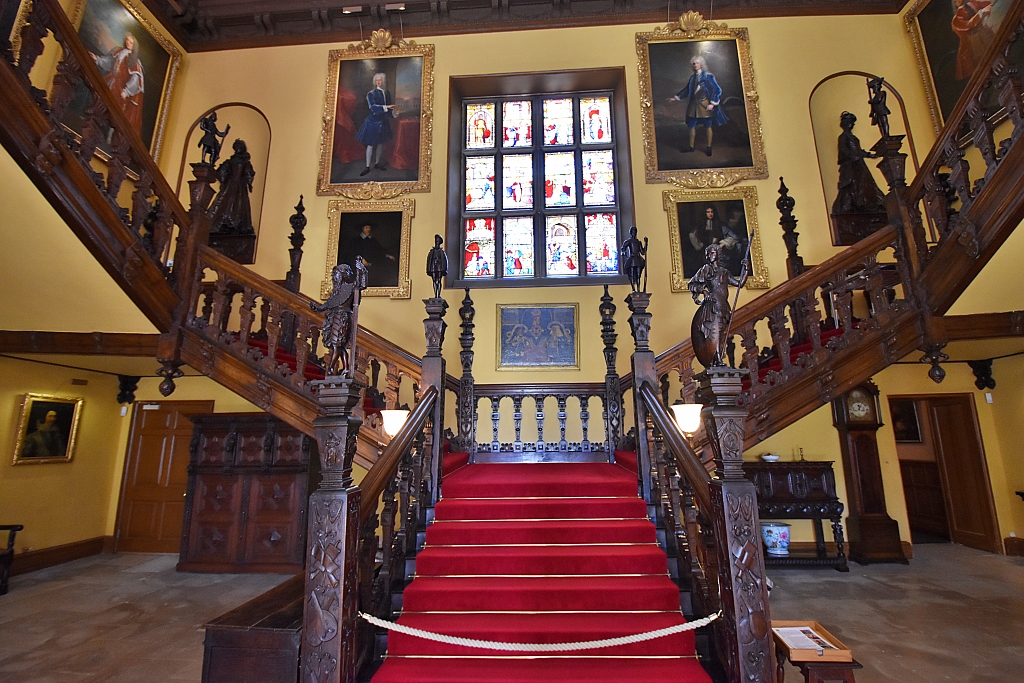 The Great Hall © essentially-england.com
The Great Hall © essentially-england.comBrown Drawing Room
The Brown Drawing Room is another room that has changed over time. In the original 1629 house this was the family’s chapel. During the 1760’s, the room served as a bedroom and dressing room. In 1857 the room became a morning room, and the ceiling was uniquely decorated. The unusual design of the ceiling was achieved by painting the bird and serpent pattern on strips of canvas and mounting the canvas to the ceiling.
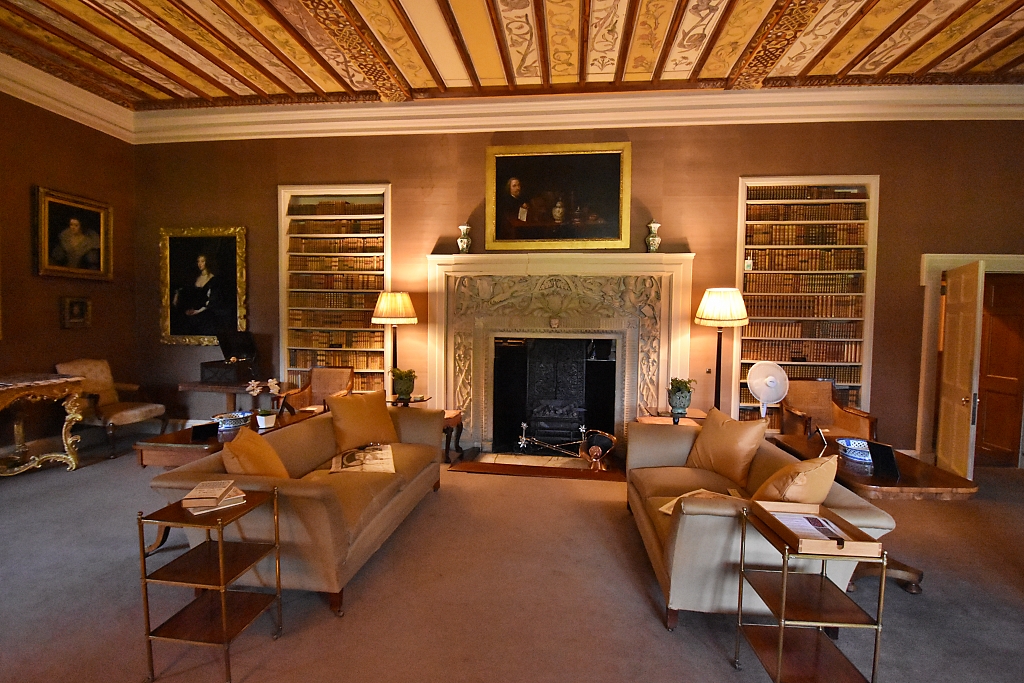 The Brown Drawing Room © essentially-england.com
The Brown Drawing Room © essentially-england.comLower Ante Room
This room features some wonderful Belgium tapestries from around 1700. Originally, this room held the stairs that went to the first floor, but after these were moved into the Great Hall, it became an after-dinner drinking room. In the 1860’s, the room became a library, and in the 1930’s, it was changed to a sitting room for pre-dinner cocktails.
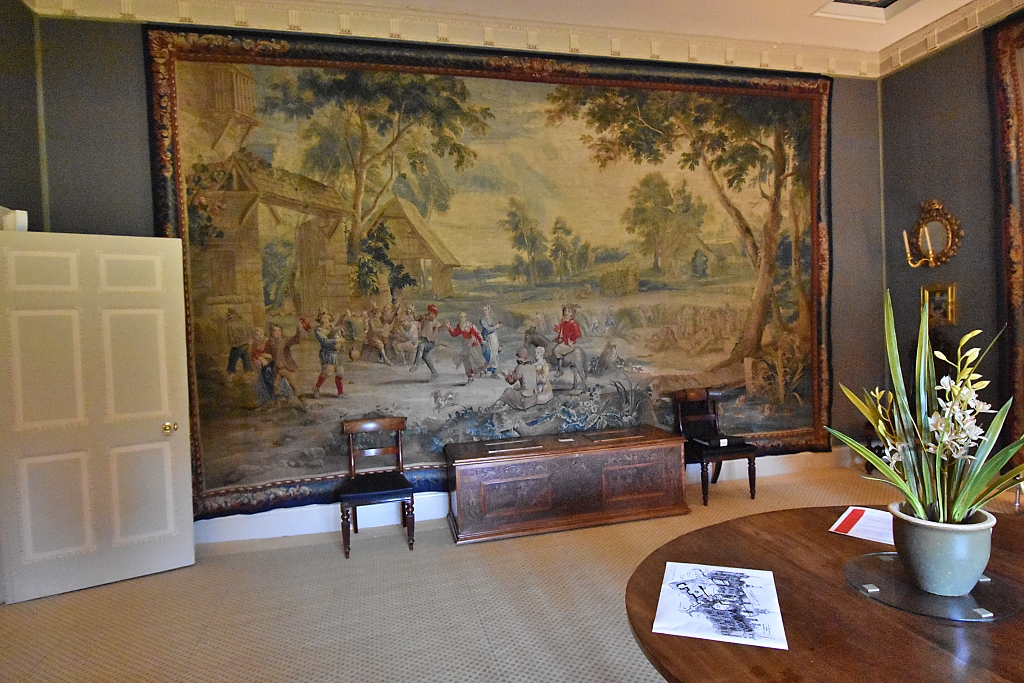 The Lower Ante Room © essentially-england.com
The Lower Ante Room © essentially-england.comDining Room
The Dining Room is a lovely large dual aspect wood panelled room. Noticeable paintings hanging on the walls include Queen Elizabeth I and Philip Kerr, 11th Marquess of Lothian, and last owner of Blickling Hall.
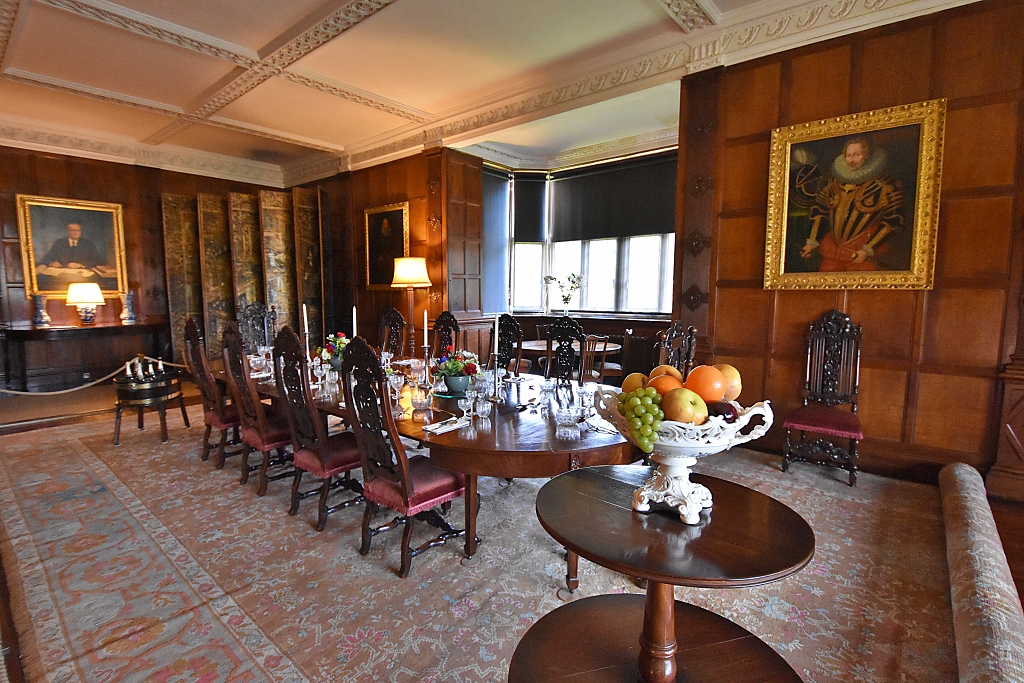 The Dining Room © essentially-england.com
The Dining Room © essentially-england.comDownstairs/Kitchens
It’s quite a contrast when you go downstairs into the kitchens and servant area. There’s nothing fancy here, just painted walls and the tools to do the job. It was like two different worlds!
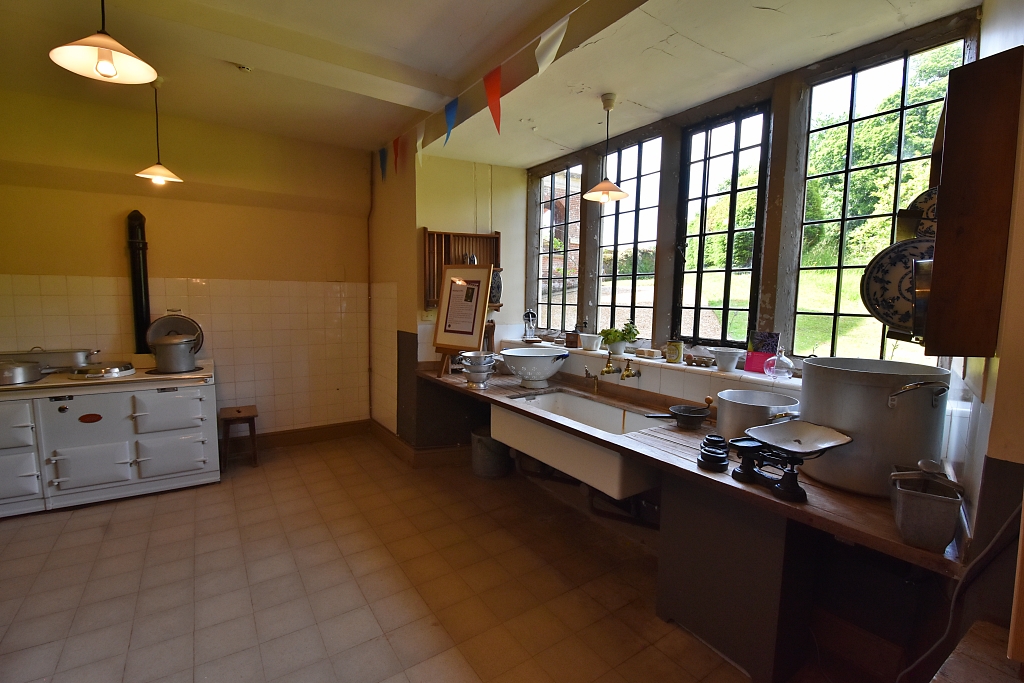 The Kitchen © essentially-england.com
The Kitchen © essentially-england.comLong Gallery/Library
This must be one of the finest libraries I’ve seen. The 123-foot-long room was originally built so that Sir Henry Hobart could use it for exercising when the weather was poor. In 1729 the room was a portrait gallery and held the paintings seen in the Great Hall.
The Long Gallery became a library in 1745 after the owner of Blickling Hall inherited a collection of around 12,000 books. The walls are lined with bookcases full of wonderful old books and are considered to be the greatest collection of books the National Trust care for.
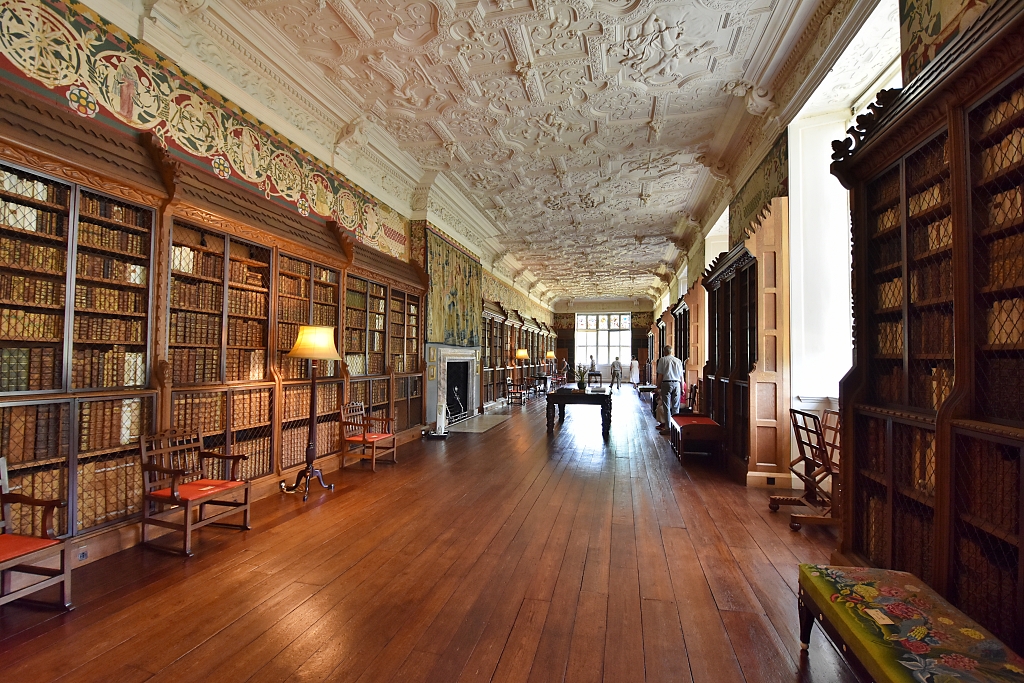 The Library © essentially-england.com
The Library © essentially-england.comPeter the Great Room
Fancy being given a tapestry by Catherine the Great for your ambassadorial services in Russia only to find when you get back home to Blickling you have nowhere to hang it. What would you have done?
Well, John Hobart, 2nd Earl of Buckinghamshire, found himself in this predicament around 1770 and decided to remodel the rooms to create the Peter the Great Room. Also hanging in this room are two Thomas Gainsborough portraits of the Earl and his second wife.
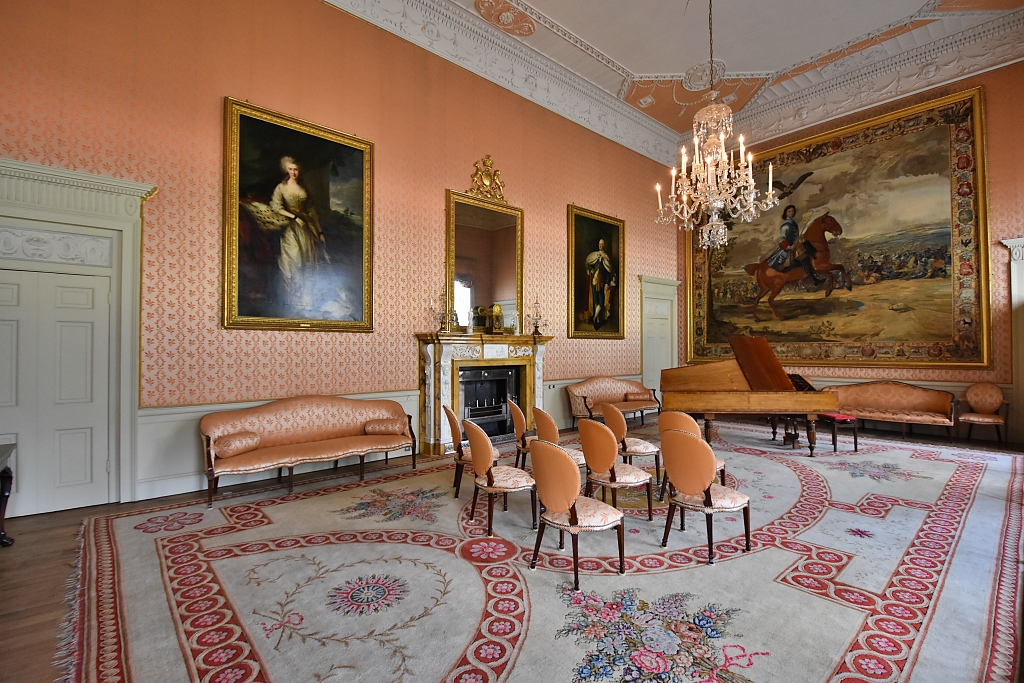 The Peter the Great Room © essentially-england.com
The Peter the Great Room © essentially-england.comState Bedroom
The State Bedroom dates from the same time as the Peter the Great Room and was intended for overnight stays by royalty. I wonder if this room was ever used, as there's no record of royal guests at Blickling Hall.
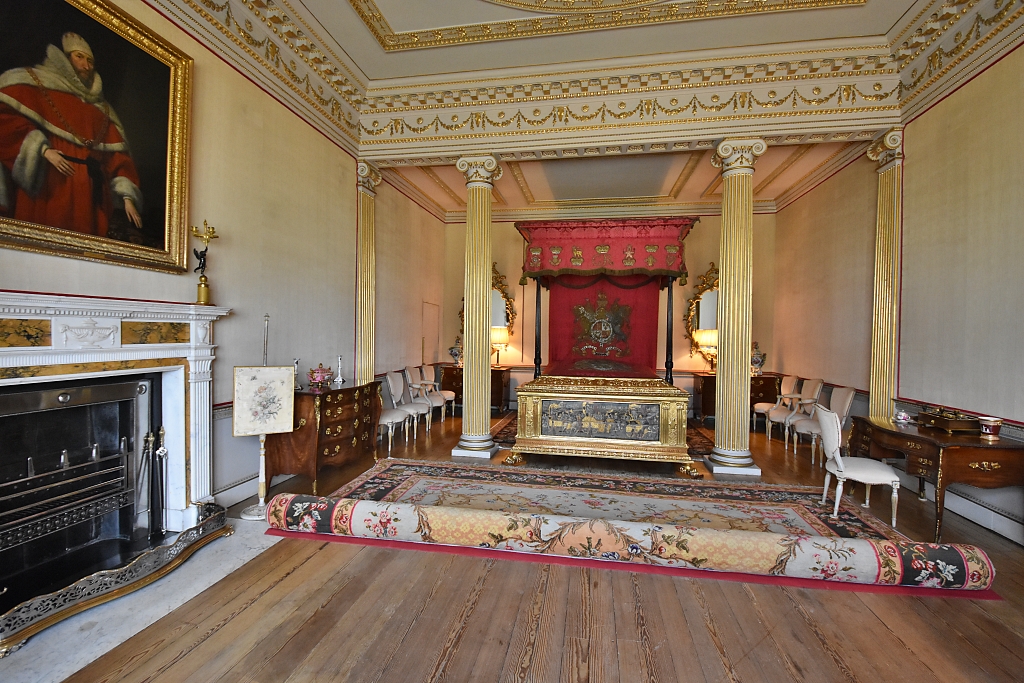 The State Bedroom and Portrait of Sir Henry Hobart © essentially-england.com
The State Bedroom and Portrait of Sir Henry Hobart © essentially-england.com
The Formal Gardens
The formal gardens are simple affairs, with a parterre, lakeside walk, and woodland paths to the Temple, Dell, and Orangery. Like the house, each owner has either remodelled the existing gardens or rescued them from neglect. On a sunny afternoon they made a very pleasant stroll before we set off to explore the parkland.
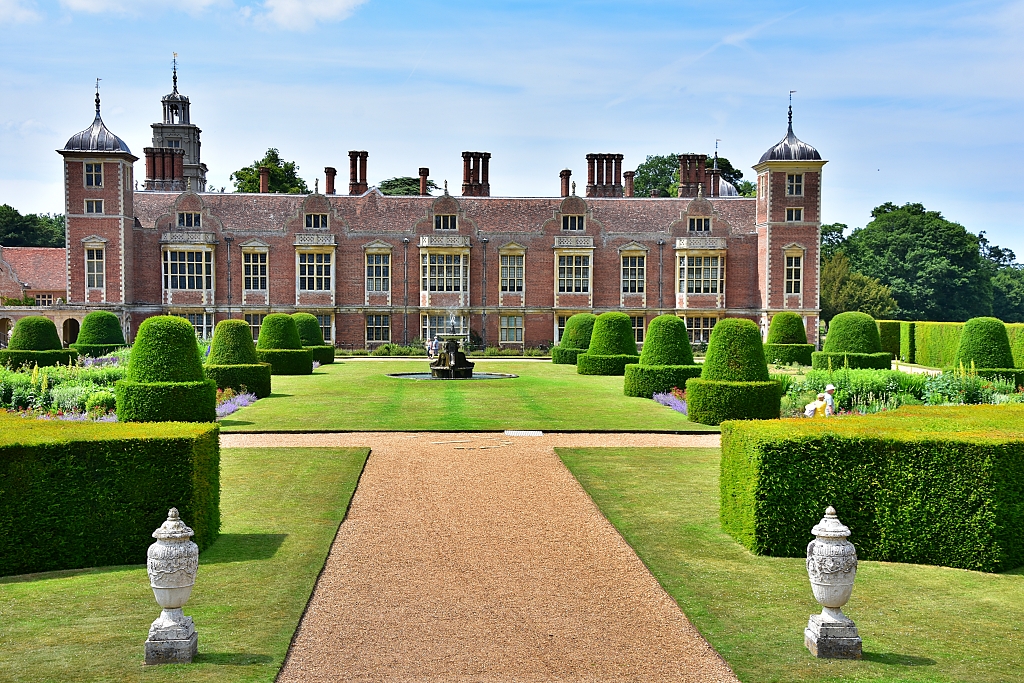 The Parterre Garden © essentially-england.com
The Parterre Garden © essentially-england.com
The Blickling Ghosts
Yes, you read the title correctly, ghosts. Believe it or not, but Blickling Hall has four ghosts!
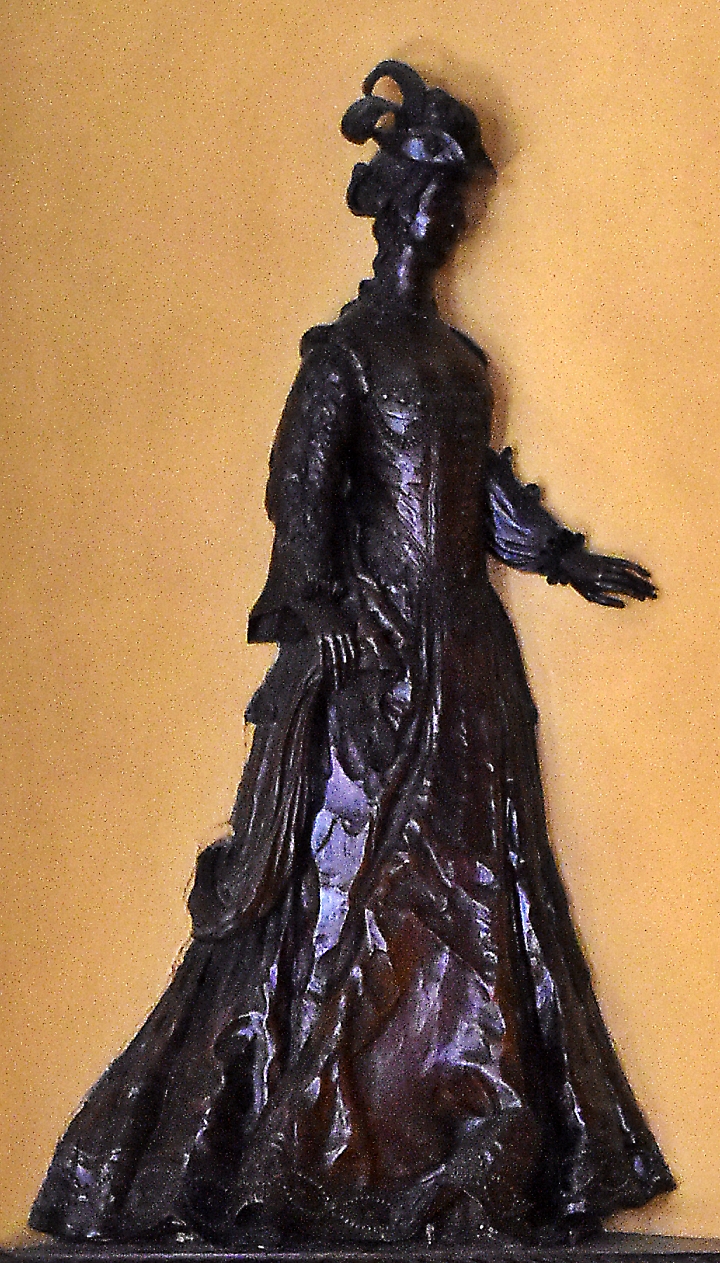 Anne Boleyn Figure © essentially-england.com
Anne Boleyn Figure © essentially-england.comThe first and most common ghost is that of Anne Boleyn. Apparently, at midnight on the anniversary of her execution (19th May) a coach pulled by four headless horses is driven by a headless coachman up the main gravel pathway to the front of the house and disappears. The only passenger in the coach is Anne, who sits there calmly holding her head on her lap. This rather gruesome tale attracts many night-time visitors.
Many people may not know that Anny Boleyn's younger brother, George, faced the exceuctioner two days before Anne did herself. It's no wonder, then, that their father - Sir Thomas Boleyn - is said to have been cursed because he did not prevent two of his children being executed by King Henry VIII. As a punishment, every year his ghost must rush from Blickling Hall and try to cross twelve bridges before dawn.
If you get to visit the West Turret Bedroom, you may hear the ghostly groans and moans from Sir Henry Hobart on each anniversary of his death (29th December).
And finally, whilst wandering around the house, you may get the chance to bump into the spirit of shy Sir John Fastolf. Don’t shout or scream though, as you may frighten him away and spoil it for everyone else!
Happy ghost hunting, you may find us outside the hall on the next 19th of May!
If you're interested in cycling or walking around the Blickling Estate, click here.
There is so much to see and do at Blickling Hall. If you want more information and opening times, please visit the National Trust website.
Are You Planning a Holiday in Norfolk?
Where You Could Stay
Norfolk has no shortage of fabulous holiday accommodation whether you want to spend time on the beach, love boating or want to explore inland. You may covet a tiny fisherman's cottage like the one in Blakeney we kept returning to. You may like something larger and more modern like a loft overlooking the Norfolk Broads, or the right place for you may be a chic city apartment perfectly placed to explore Norwich...
To see other holiday cottages in Norfolk click here. Or check out holiday cottages in other parts of England by clicking here.
Or you could try a family orientated holiday resort in Lincolnshire as there's plenty of choice...
If you need to find a hotel, then try one of these search platforms...
What You Could See and Do
It's next to impossible to be bored in Norfolk, there's just so much to do and see. The list below includes some of our favourite places
- Explore Norwich with its shops and two cathedrals and pay a visit to Norwich Castle and its teapot museum.
- Visit Admiral Lord Nelson's birthplace at Burham Thorpe and read the report of the Battle of Trafalgar in a copy of The Times from 1805
- Spend a day at Sandringham and Castle Rising Castle
- Take a ride on the Holt to Sheringham Railway and explore the beautiful little town of Holt and the seaside town of Sheringham
- Explore the ruins of Castle Acre and Castle Acre Priory
- Shop in Burnham Market
- Wander around the small town of Blakeney, explore the church and harbour before making an attempt to reach the seals at Blakeney Point
- Admire the famous windmill and go birdwatching in Cley-next-the-Sea
- Be wowed by the rhododendrons in Sheringham Park
- Visit Anne Boleyn's family home, Blickling Hall, or explore Oxburgh Hall, a fabulous manor house with a moat.
- Go wildlife spotting while walking through the Cley marshes from Blakeney or to the small village of Morston and its quay.
- Or even fish for crabs and wander along the famous pier at Cromer.
For more inspiration try our Things to do in Norfolk page.
For more holiday ideas return from Blickling Hall to the Norfolk page.





